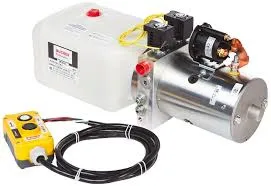Sep . 16, 2024 08:43 Back to list
lifting platform power unit
Understanding Lifting Platform Power Units
Lifting platforms, essential tools in various industrial and construction sectors, rely heavily on power units to ensure efficient and reliable operation. These platforms are designed to elevate goods, materials, and personnel, making them invaluable in situations where manual lifting is impractical or unsafe. In this article, we'll explore the function and significance of power units in lifting platforms, the types available, and their impact on productivity and safety.
A lifting platform power unit consists of several components that work together to generate the necessary force to raise and lower the platform. At its core, this unit typically includes an electric motor, hydraulic pump, control valves, and a reservoir for hydraulic fluid. The electric motor activates the hydraulic pump, which pressurizes the fluid, creating the force required to lift the platform. Control valves manage the flow of hydraulic fluid, allowing for smooth ascents and descents.
There are various types of power units used in lifting platforms, each suited for specific applications. For instance, electric power units are prevalent due to their efficiency and lower operational costs. They are ideal for indoor environments, producing minimal noise and emissions. However, for outdoor settings or heavy-duty applications, diesel or gasoline-powered units may be preferred due to their greater power output and mobility.
lifting platform power unit

The selection of an appropriate lifting platform power unit is crucial for optimizing operational efficiency. A properly matched power unit ensures that the lifting platform can handle the intended load without straining the system, which can lead to increased wear and tear or even catastrophic failure. Furthermore, overloading a lifting platform can compromise safety, making it essential to adhere to the manufacturer’s specifications regarding weight limits.
Safety is a paramount consideration when using lifting platforms. Power units are designed with various safety features, such as overload protection systems, emergency stop buttons, and alarm indicators, to prevent accidents during operation. Regular maintenance and inspection of the power unit, including checking hydraulic fluid levels and ensuring the integrity of hoses and seals, contribute significantly to the safety and longevity of the lifting platform.
Moreover, advancements in technology have significantly enhanced the performance of lifting platform power units. Modern systems may include smart controls, enabling operators to monitor performance metrics in real-time. These advancements not only improve accuracy but also help in predictive maintenance, reducing downtime and extending the operational life of the equipment.
In conclusion, the power unit is the heart of a lifting platform, playing a critical role in its functionality, efficiency, and safety. By choosing the right type of power unit and adhering to maintenance protocols, users can maximize productivity while minimizing risks. As industries continue to evolve, the ongoing innovation in lifting platform power units promises to enhance their effectiveness, ensuring they remain indispensable tools in various applications.
-
Fork Lift Power Units - Hebei Shenghan | Efficiency, Reliability
NewsJul.13,2025
-
1.5-Ton Turbocharged Cylinder-Hebei Shenghan|Hydraulic Solution,Energy Efficiency
NewsJul.13,2025
-
Auto Hoist Power Units-Hebei Shenghan|Efficiency&Industrial Lifting
NewsJul.13,2025
-
Double Acting Power Units-Hebei Shenghan|Hydraulic Solutions,Industrial Efficiency
NewsJul.13,2025
-
1.5 Ton Lifting Cylinder 70/82-40-290-535 - High-Performance Hydraulic Solution | Hebei Shenghan
NewsJul.13,2025
-
Fork Lift Power Units - Hebei Shenghan | Efficiency&Reliability
NewsJul.13,2025
